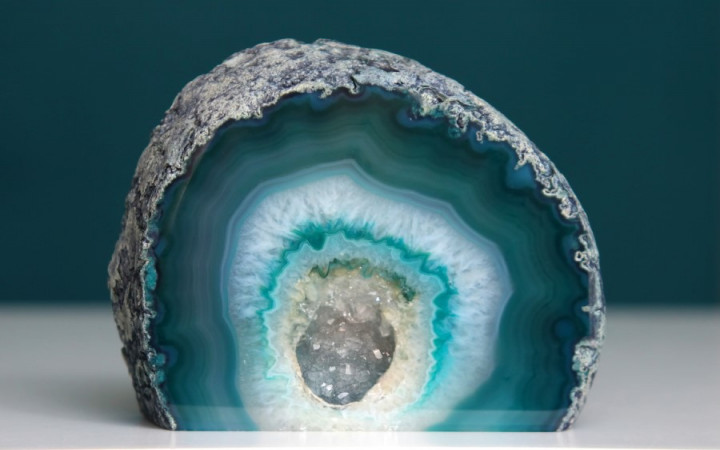Today’s Wonder of the Day was inspired by Miah. Miah Wonders, “How are geodes made?” Thanks for WONDERing with us, Miah!
If you're ever hiking in the deserts of Arizona or the stream beds of Iowa or the forests of Indiana, you might run across some unique rocks. Mostly round and varying in size from a tennis ball to a softball, these interesting stones aren't quite as heavy as you expect them to be.
In fact, they seem almost hollow inside. Resting on a nearby log, you decide to pound the rock against a large flat rock to see what happens. It splits open and you're amazed to find colorful crystals inside. What have you discovered? A geode, of course!
Geodes are spherical rocks that contain hollow cavities lined with crystals. The name geode comes from the Greek word Geoides, which means "earthlike." These unique rocks can be formed in a variety of ways.
In volcanic rock, geodes start out as bubbles. Geodes can form in areas far away from volcanoes, too. In sedimentary rock, geodes might start out as animal burrows, mud deposits, or even tree roots.
Over time, the air, mud, or tree roots create a hollow cavity within the rock, while the outer edges harden into a spherical shape. Then the real scientific magic happens as groundwater begins to flow around and through these rocks.
Groundwater naturally picks up a variety of minerals as it makes its way down from the surface. These minerals, including quartz, amethyst, and calcite among others, become dissolved in the groundwater and then get deposited on the inside of developing geodes over long periods of time.
After thousands of years of groundwater seepage, what is the result? You can see the beautiful result when you open a geode to reveal crystal points and/or layers of banded crystals inside the geode's cavity.
Like a fingerprint, every geode is unique, because each geode has a unique composition that is different from every other geode. The only way to discover the beauty inside of a geode is to crack it open with a rock hammer or cut it open with a rock saw.
Geodes will vary widely in terms of their size, crystal formation, and colors. Some of the most prized geodes are those that feature rare black calcite or amethyst crystals.
Geodes can be found all over the world. Areas with the most geodes, however, tend to be deserts, volcanic ash beds, or areas with plentiful limestone. In the United States, for example, you can find plenty of geodes in California, Arizona, New Mexico, Utah, Nevada, Iowa, Missouri, Illinois, Indiana, Kentucky, and Ohio.





